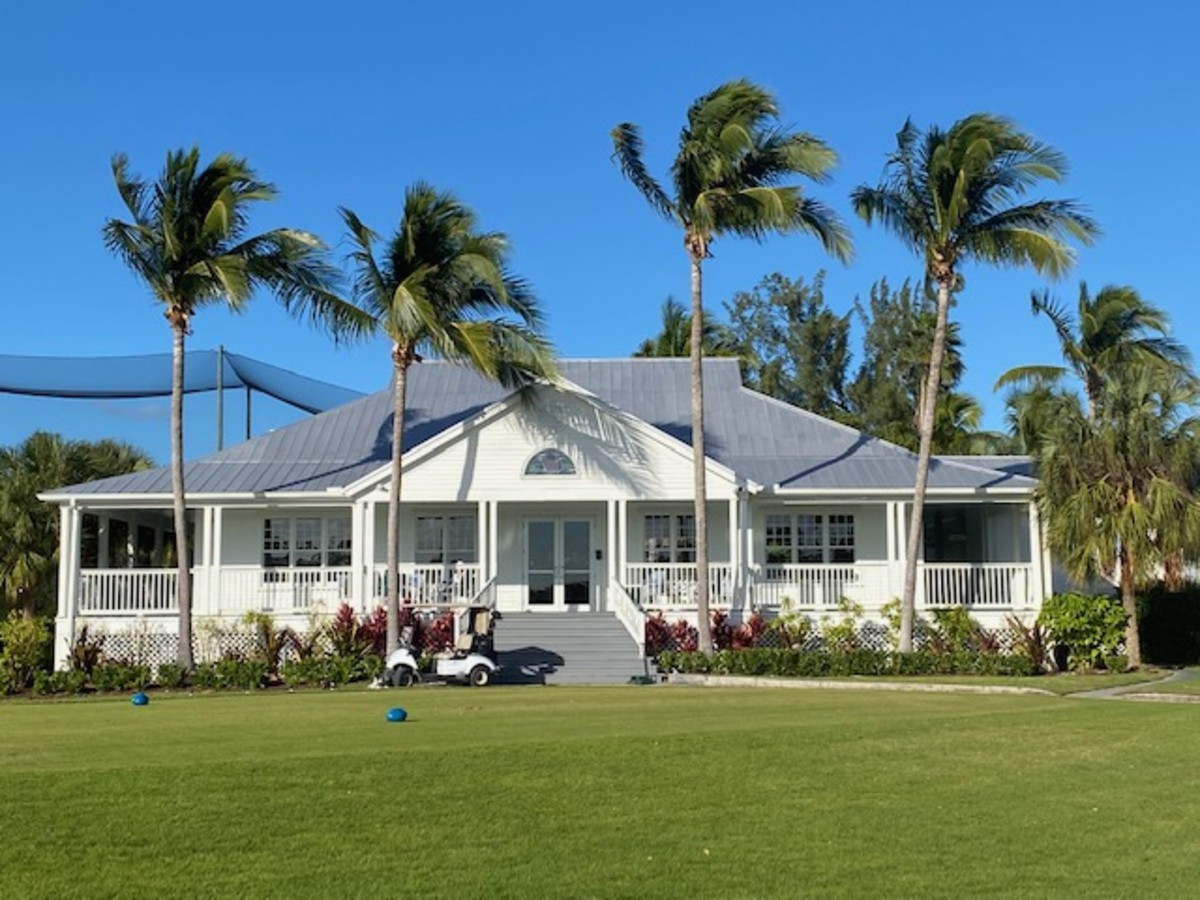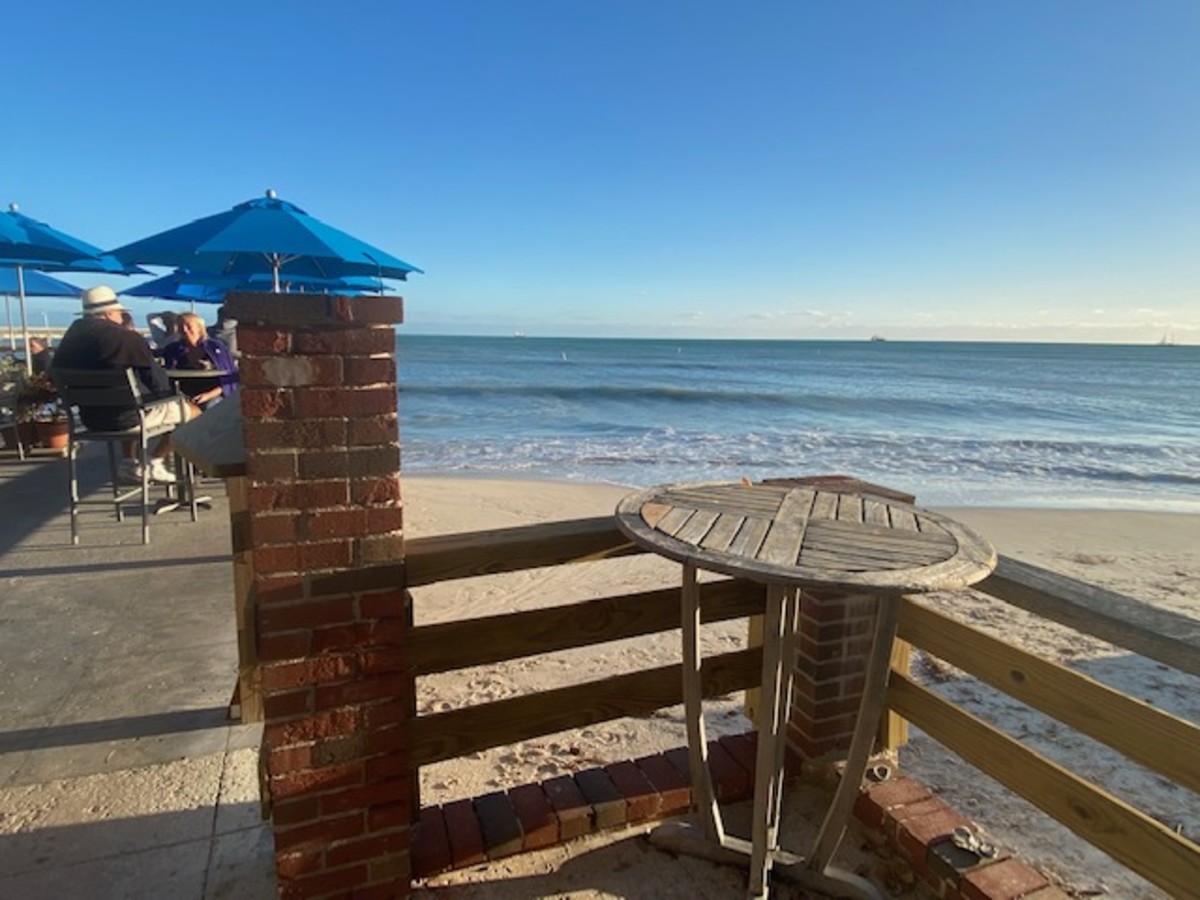After Wasting Away in Margaritaville, Key West Golf Club Provides a Respite

In the jaws of winter, few domestic vacation destinations can top the Florida Keys and, especially, Key West. This magical place, full of history where weird is welcome and even encouraged, can practically guarantee sunny skies and warm temperatures.
In the whole of Florida there are over 1,250 golf courses and while Key West Golf Club is America’s southernmost, it is also the only public facility in the entire Keys. You can certainly fly into funky Key West International Airport, only 10 minutes away, but then you’d miss the Overseas Highway pleasure ride, a breathtakingly beautiful 128-mile man-made yet natural wonder of a roadway from Key Largo to lands’ end in what the Spanish christened "Cayo Hueso."
Key West Golf Club’s secluded 200 acres technically sits on Stock Island along U.S. 1 at Mile Marker 4—most Keys establishments are identified by Mile Marker—and is just shy of the bridge into the Conch Republic, so named when the island "tongue-in-cheek" seceded from the United States over an immigration checkpoint and political dispute on April 23, 1982.

Once home to pirates, musical pundits, playwrights and a president, Key West is still a destination for people seeking their own versions of treasure, or to disappear and escape from everyday life. It’s not uncommon to see inhabited derelict houseboats offshore or to find wealthy tourists smoking $100 cigars alongside hopeful crooners singing for their supper. Head there two weeks before Halloween to revel in Fantasy Fest and it all becomes clear: anonymity reigns and anything goes.
Traveling there 100 years ago was entirely different when no road existed and multiple ferry stops were the sole option. You’ll marvel, as I have, at how this incredible passageway was created ... a tale equal to a country song filled with love and devotion, adventure, exploration, surprises, heartbreak and, in the end, tragedy.
You know, like golf.
In the early 1900s, Henry Flagler, the second-richest man in America behind Standard Oil magnate and partner John D. Rockefeller, branched off to build hotels and railroads, accessing Florida’s east coast so his ailing wife could escape harsh northern winters. Eyeing Key West’s deep-water port, Flagler’s vision included extending his East Coast Railway there. This massive and complicated construction of the Overseas Railroad, also known as "Flagler’s Folly," began in Miami in 1905 and was completed in 1912—but at great cost.
Navigating mosquito infested wetlands and mangroves, hewing out stubborn coral rock and engineering concrete bridges over great expanses of ocean, including the legendary 7-Mile Bridge at Marathon Key, the project ran over budget by $50 million, or $1.5 billion in today’s dollars. Privately funded by Flagler, the goal was to establish trade and tourism between Key West, South America, Cuba and the newly opened Panama Canal.
Good idea, but Flagler’s plans never materialized. In 1935, the last of five hurricanes during the building and initial operations finally wiped out the railway along with hundreds of lives. With the roadbed’s substructure sitting dormant afterwards, the state of Florida purchased the lengthy right of way for a mere $640,000. Today, that rebuilt road is U.S. 1, though sections of the old foundations are still standing.
With hundreds of water activities beckoning such as deep-sea fishing, boating, diving, and kayaking, as well as museums, the Conch Train and Trolley, landmark tours including the macabre Ghosts and Gravestones, haunted everything and a FastCat boat dash two hours west over crystal waters to stand-alone Fort Jefferson, where criminals wasted away ... why play golf?
Often, finicky tropical weather doesn’t cooperate with normal Keys’ travel itineraries. When the winds howl, life on the ocean is too rough and the Dramamine won’t work, or you’ve had your fill of street performers and Jimmy Buffett and Kenny Chesney sound-alikes, die-hard golfers absolutely should head for the only "Caribbean" golf club in the U.S.
Designed in 1924 by William Langford and renovated by famed architect Rees Jones in 1983, this 6,500-yard layout is fun as Jones leaves most greens open in front. Fairways are generous, except for par-4 holes 6, 7, and 17, where a chute of fairways surrounded by mangroves and water make for crowded tee shots. Otherwise, blast away.

Greens are not overly large, and because undulation is not severe, Jones leaves many pin positions available to spice up variety on the fast and true putting surfaces.
Most par 3s are difficult, beginning with the 139-yard 5th where waving seagrasses frame the water’s edge and bunkers are planted on either side of the green. At the aptly named 8th hole, "Mangrove," those native trees are all that’s visible between you and the flag, save for the pinnacle of green protruding slightly above them. The hole isn’t long, just all carry. Shorter hitters may still have trouble at 129 yards, though a drop area behind the green offers relief. The 140-yard 16th, 76 yards at the forward tees, is also an all-carry par 3 surrounded by bunkers, but hitting it over may anger long-suffering homeowners directly behind the green.
The forward tees, at 5,000 yards, offer an ideal opportunity to score for those who don’t hit it a mile, or even for anyone who may have overly indulged at the hundreds of watering holes only a few miles down the road.
The course is always busy in-season, averaging 250 rounds per day from Dec. 26 through Easter. Tee times are scarce, with reservations highly recommended. However, walk-ons sometimes get lucky. Dave Livingston and sons David, Tyler, and Lucas, visiting from Bristol, Vt., needed something to do when a January cold snap hit. “We looked up nearby golf courses and this was it. But it looks like a nice course,” said Dave, taking full advantage of the super-twilight rates.
Even if you’re a non-golfer, consider going as a ride-along to enjoy the open space and abundant wildlife. Egrets, ibis, pelicans, odd-looking Muscovy ducks, migrating eagles and hawks and slippery iguanas are no trouble to find.
Most play comes from tourists, and in a nod to travelers’ woes from checking golf bags, both in expense and apprehension for an on-time and unscathed arrival, Key West GC offers an excellent rental program. For $50, golfers get a full bag of quality Cleveland Golf clubs with 100 new sets arriving every year.
Rates are comparable to most Florida courses. In-season runs from November through April with greens fees, including cart, at $125 plus tax. Off-season is May through October with 18-hole fees at $99. Twilight rates generously begin at 1 p.m. with super-twilight after 4 p.m. for $99 and $75 respectively. Juniors under 18 are $59 and riders are $30.
Yearly, Monroe County residential, snowbird and summer memberships are available and offer walking instead of mandatory carts before 8:30 a.m. and after 2 p.m. Other perks include 9-hole options, discounted greens fees and guest rates.
A Few Dining Recommendations
To avoid the crowds Key West is known for, head north to Cudjoe Key for probably the best lunch special in the Keys at the Square Grouper, named for marijuana bales that in the wild '70s were often found floating in the ocean awaiting "pick-up." The daily Blue Plate Special is $13, including beer or soft drink. Otherwise, order anything as everything is superb. After a late tee time, trek upstairs to My New Joint 420 Lounge for craft cocktails, local beers, and tapas.

If Old Key West-style is more your preference, try the ambience and spectacular sunset views at Louie’s Backyard only a couple blocks from the popular "Southernmost Point" buoy. Stroll into the AfterDeck Bar right on Dog Beach for people-watching or more casual Upstairs Café with tables perched on outdoor verandas. The main dining room with its "New World" cuisine will require reservations and planning ahead is advised.
